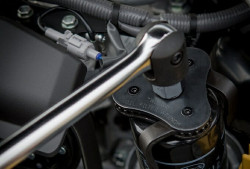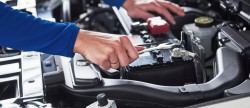Application of Pressure Gauge
What is an oil pressure gauge?
An oil pressure gauge is an indicator of the overall car performance. It is responsible for issuing warnings concerning the functionality of your car and if there is any abnormal behavior within it. Knowing about an oil pressure gauge gives you the advantage of properly diagnosing a problem if there is any.
It also tells you how much oil you have left in your car, and some of the major problems it warns you about include oil pump failure, broken hose, or a leaking gasket. We recommended that you check your oil pressure gauge regularly.
Types of pressure gauge
There are two types of oil pressure gauges used in cars—mechanical and electric oil pressure gauges. Most modern cars use an electric oil pressure gauge because it is more accurate and less risky in pressure readings.
Mechanical oil pressure gauge
In a mechanical oil pressure gauge, the oil is sent from a small tapping by a small pipe that is usually made of copper or plastic. The pipe is directed from dangerous areas to prevent it from being punctured as that may cause an oil leak. The oil is required for the gauge to make the bulb rise and then straighten the needle that gives the reading.
A mechanical oil pressure gauge can only be found in older car models as there is a high risk of an oil leak that comes with using it. Another contributing factor to its little use in modern cars is that it does not use electric current to measure resistance.
Electrical oil pressure gauge
An electrical oil pressure gauge is mostly used in modern cars because of its use of electric current and its safety compared to a mechanical one. The current acts as a source of power that runs from the fuse box and through the gauge and to the sensor unit.
The oil pressure determines the resistance which in turn determines the reading on the gauge. The wires of an electric oil pressure gauge are all stuffed up in the dashboard of your car, this type of oil pressure gauge makes it easier to connect wires, plus it is less bulky.
The common application of pressure gauge
The application of pressure gauge can be seen in different ways but most importantly, they are used to maintain a balance in a system. It is used to measure the resistance and pressure of oil flow, they also help in detecting leaks and monitoring filtration. They can also be used in other fields and devices for various other reasons.
Pressure gauge reading
Knowing how to read a pressure gauge is important as it tells you the overall condition of your car. When doing this, you may get a high reading, a low one, or a zero reading, and knowing the number range that makes a reading high or low is exactly what you need to learn.
High reading
The ideal oil pressure reading varies for different car models, but the standard reading should be between 25-65 psi. The oil pressure is important for the oil to get to their various locations at their designated time and if the pressure of the oil reads beyond the standard time it is called a high reading when this happens, you will need to take any action to bring the oil pressure back to its normal state.
Causes of high oil pressure
Blocked passages
Oil needs to flow through various passages to get to its required location and when one of these passages becomes blocked, the oil faces some resistance that causes high oil pressure.
Dirty or contaminated air filter
An air filter is meant to filter out dust and other debris from the air getting into the engine, so when the air filter is too dirty, it becomes clogged and it affects the resistance of the oil, making it flow at high pressure.
Oil quality and viscosity
The lower the viscosity, the faster oil will flow. If the oil you are using for your vehicle is not the right viscosity i.e it’s too thin or thick, it’s not the right oil to be used in your car. the temperature of your internal system also affects the viscosity of the oil, at a high temperature, the oil becomes less viscous and it flows with high pressure.
All of these origins of high oil pressure cause various components in your car to wear out gradually.
Low-pressure reading
When you get a low oil pressure reading, it means that the oil running in your car is doing so at low pressure. Low oil pressure can be caused by the low engine oil, wrong viscosity, bad oil pump, and a dirty air filter. When all these happen, there is a decrease in lubrication of components as sufficient oil is not able to reach them, this causes damage by friction.
Zero oil reading
The gauge reads zero if there is insufficient oil, if the gauge is faulty, or if the oil pump is damaged. You can also get a zero reading when your car is idling, to fix this, fill up your oil tank if it’s empty or take your car to a professional.
You may get a warning from the check engine light If you get a high, low, or zero oil pressure reading. You may also get other symptoms like a burning small, oil leaks, and engine damage.
Conclusion
We briefly explained the application of pressure gauge and we have seen that they can be found in various devices, but e have also focused on the pressure gauge found in cars. Looking at the two types of pressure gauges, you can see that the electric one is more accurate and now widely used compared to the mechanical one.
We have also explained high, low, and zero pressure reading and their possible causes. If you notice any of these symptoms in your car, visit the nearest auto shop for repairs as serious damage can be done with time.




